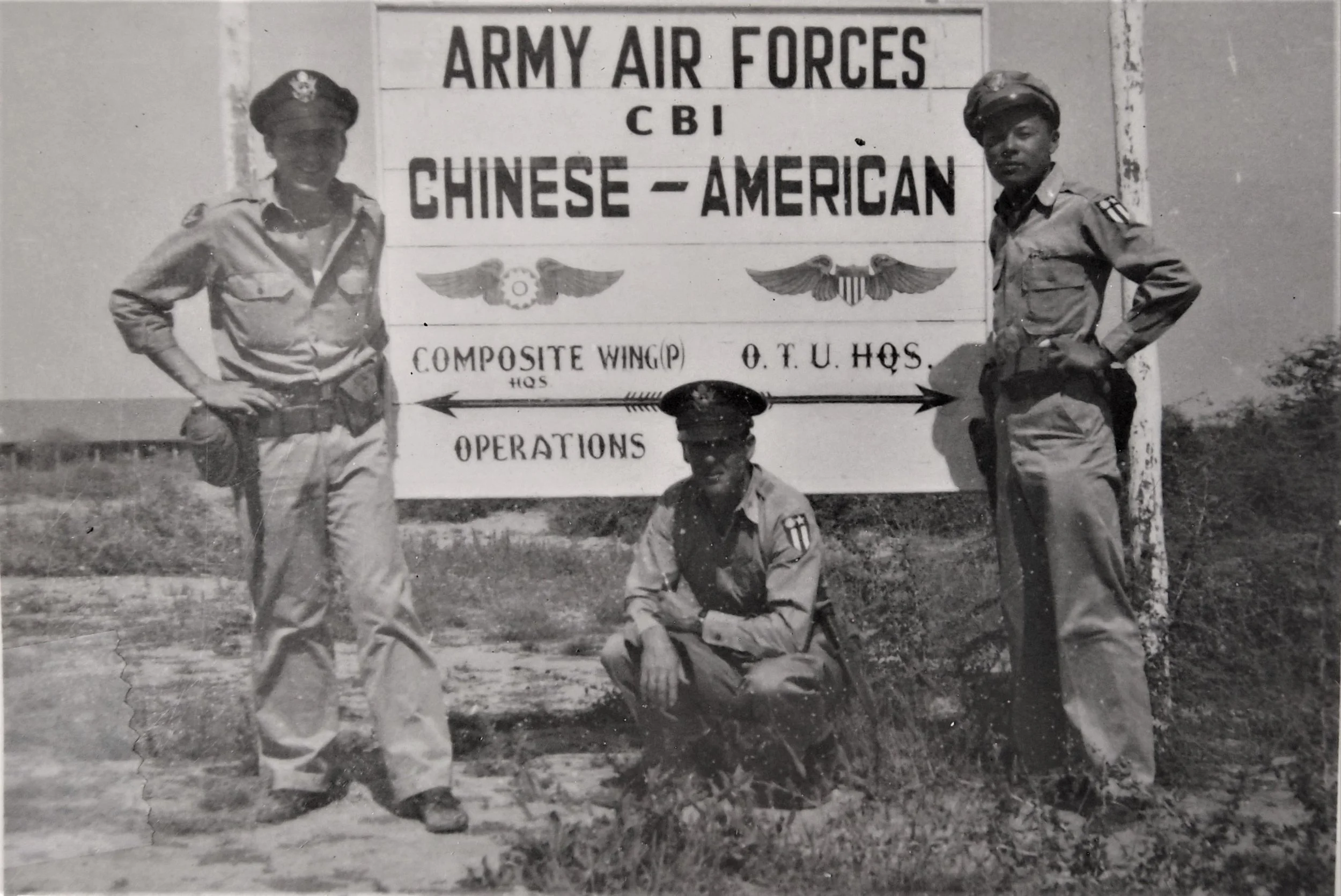“Flying Tigers New Emblem”
In early October of 1943, newspapers across the US announced that the 14th Air Force had officially adopted a new Flying Tigers emblem, with Maj. Gen. Claire L. Chennault's approval and endorsement. Former commander of the renowned American Volunteer Group that gained fame as the original “Flying Tigers,” as well as of the China Air Task Force that succeeded it, Chennault now served in command of the 14th Air Force. Its effectiveness soon earned it the moniker, "the Fighting Fourteenth.” Carrying on the Flying Tigers legacy under Chennault’s leadership, the 14th went on to win air superiority in China. In his memoirs, Chennault later praised the accomplishments of his air force and wrote, “It was a record of which every man who wore the Flying Tiger shoulder patch can be proud.”
“Chennault’s Baby” Wreaks Havoc
The month of September 1945 marked the final period of existence of the CACW. “Almost two years of operations were climaxed in August by the sudden ending of the war, thus bringing about the disbanding of the Chinese-American Composite Wing,” wrote the 1st Bomb Group’s acting historical officer. Conceived by Maj. Gen. Claire Lee Chennault, famed former commander of the American Volunteer Group (AVG), the CACW took Chennault’s plan to assist the Chinese even further than his previous efforts. Their mission to paralyze the infrastructure of the Japanese War Machine and to inhibit enemy troop movements by destroying cargo caravans, troop transports, railroads, tunnels, and bridges was unquestionably successful.
“Just Another Day”
As the rest of the world celebrated V-E Day, it was business as usual in China’s war zone. The Chinese-American Composite Wing’s 2nd and 3rd Bomb Squadrons, with two 32nd Fighter Squadron P-51s, bombed separate targets in the vicinity of Chenghsien, Honan (Henan) Province, in Central China’s Yellow River Valley. When they received news of the German surrender soon afterward, they did not celebrate this victory but “took it just as another day.” it would be another three months before Japan admitted defeat in China. During that time, two more 3rd Squadron planes were lost, and the fate of a six-man aircrew reported as missing in action was not confirmed until after the war ended.
Avengers Cross “the Hump”
The 2nd Bombardment Squadron (“Avengers") of the 1st Bombardment Group and the 28th and 32nd Fighter Squadrons of the 3rd Fighter Group received movement orders on October 17, 1943, and became the Wing's first increment to move to China. They flew their planes over “the Hump”—the name given by Allied pilots to the eastern end of the Himalayan Mountains—to provide air support for Chiang Kai-shek's ground forces in accordance with Chennault's plan. The 2nd Bomb Squadron’s six B-25s, under the command of Maj. Tom Foley, became the first CACW unit to reach China, arriving at Yangkai in South China on October 25, 1943.Hazardous conditions caused some of the 2nd Bomb Squadron's B-25s to delay crossing until conditions improved. Within a few days of the first attempt, the next contingent of three bombers led by group commander Lt. Col. Irving L. ("Twig") Branch followed, and finally the remaining three
CACW’s 1st Anniversary
Following lengthy preparations to ready the base for Maj. Gen. Claire L. Chennault's visit, Chinese and American personnel celebrated the first anniversary of the Chinese-American Composite Wing on October 8, 1944, at Peishiyi (Baishiyi) in Szechuan Province. The ceremony included recognition of several members of the 3rd and 4th Bomb Squadrons for their heroism in aerial combat..
Chennault’s Grand Experiment
Major General Claire Lee Chennault, in command of the 14th Air Force and formerly of the American Volunteer Group, envisioned and implemented his grand experiment--the Chinese-American Composite Wing. His purposes were to rehabilitate the Chinese Air Force fighting under Generalissimo Chiang Kai-shek, head of the Republic of China, and to provide good will and understanding between the Chinese and Americans for the future. The CACW proved to be enormously successful and played a key role in defeating the Japanese invaders.






